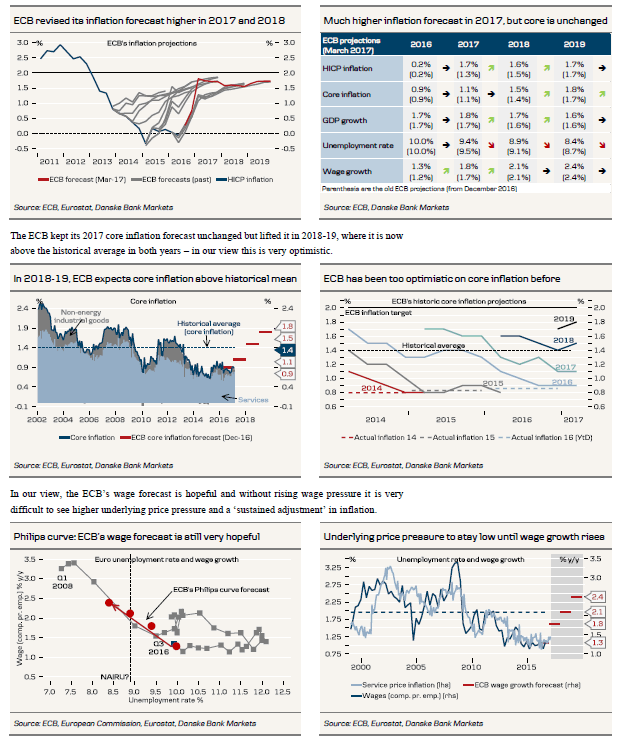The ECB kept all policy measures unchanged at today’s meeting, which was in line with our expectations. The ECB also maintained its forward guidance on policy rates as it still expects rates ‘to remain at present or lower levels for an extended period of time, and well past the horizon of our net asset purchases’. Regarding the QE purchases the ECB also continued to have an easing bias as it communicated that it stands ready to increase QE in terms of size and/or duration.
However, Draghi had a hawkish tone during the Q&A session as he said the Governing Council discussed whether to remove the ‘lower levels’ from the forward guidance on policy rates. According to Draghi, the forward guidance in terms of lower policy rate levels was an expectation and the probability of this expectation materialising had gone down. Added to this, the ECB removed a sense of urgency in taking further actions as the introductory statement no longer included ‘If warranted to achieve its objective, the Governing Council will act by using all the instruments available within its mandate.’
In our view, a next step from the ECB when moving in a less dovish monetary policy direction is to remove the ‘lower levels’ from the forward guidance. However, according to Draghi this is a very small step and in our view it also does not mean the ECB will hike policy rates in the near future. We expect the ECB to continue to communicate that policy rates will remain at present levels for an extended period of time, and well past the horizon of the QE purchases. Hence, it should not start to communicate that policy rates could be hiked before the QE purchases have stopped running.
The ECB revised its headline inflation forecast upward this and next year while it lifted its core inflation forecast for 2018 and 2019. In our view, the ECB was already very optimistic in its core inflation forecast before the upward revision to the March projection and we expect the ECB will have to lower its core inflation projection later in time, which could be followed by a return to a more dovish stance. Related to this, Draghi very clearly said the ECB’s inflation forecasts are conditional on full implementation of the monetary policy measures.
Along these lines, Draghi repeated that underlying price pressure remains subdued and we stick to our view that the ECB will extend its QE purchases beyond December 2017. This should follow as we expect core inflation to stay below 1.0% during most of this year and as we expect that core inflation will have to exceed 1.0% for a number of months before the ECB will announce QE tapering.
On the very short-end German yield curve, Draghi said the ECB was monitoring distortions. According to Draghi the moves were mainly driven by 1) an increasing fraction not having access to the deposit facility, 2) ‘safe haven’ flows, and 3) to a lesser extent the QE purchases. It appeared that it was still early days for this analysis and that the ECB could come back to the issue at upcoming meetings. In our view, this communication is a usual first step when the ECB acknowledges an issue.
The market reacted by sending German government bond yields higher by around 5bp beyond the 10Y point. Against this, Schatz did not sell-off, probably reflecting Draghi’s comment that the distortions to a lesser extent were due to the QE purchases. EUR/USD is trading slightly higher at 1.058 from 1.054 this morning.
Changes to the ECB’s projections
The ECB lifted its headline inflation projection considerably in 2017 and slightly in 2018, but kept it unchanged in 2019. The higher 2017 forecast was due to energy and food price inflation













